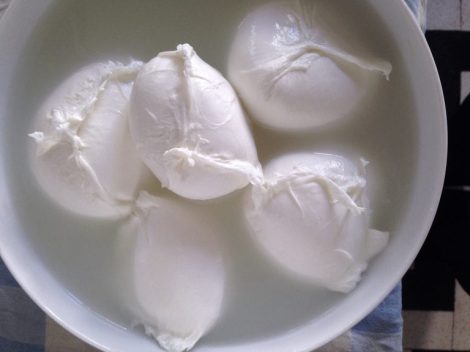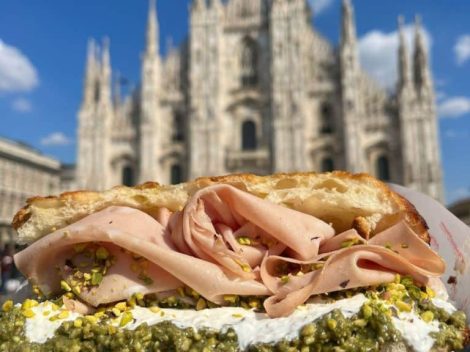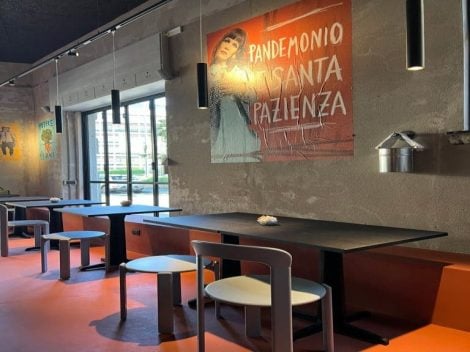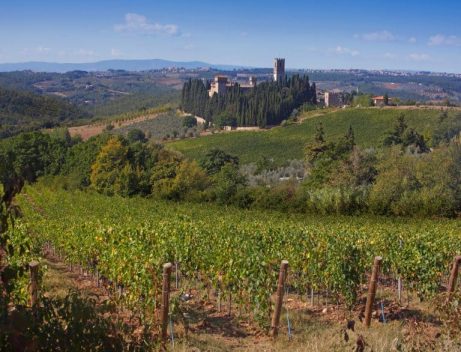Bread in Italy
The bread baking sector in Italy is constantly evolving: widespread bakeries, virtual shops, bakeries lost in the woods, the latest generation bakery with adjoining bistro and coffee bar. The shapes change but not the substance: everything revolves around bread, the new frontier of taste. Bread as an asset to be protected with rigorous attention in the choice of ingredients: search for organic, indigenous flours from small mills who believe in the value of local grain varieties. Sourdough starters dosed with art, long fermentations and attentive control of baking do the rest. Italian bread is an increasingly ethical bread, sustainable, ancient and very modern at the same time. But what are the traditional breads of the different regions? Here is a list.
The typical Italian breads
Lombardy
White and small in size, this is the traditional bread found in bakeries throughout the region. The queen of Milanese bread making is the michetta, a puffed bread roll with a typical star-shaped upper incision, thin crust and an almost hollow interior. Crescent shape, soft and tasty crumb is the banana di semola, made with a mix of semolina flour and soft wheat, with a particular shape perhaps precisely to differentiate it from the rest of the production entirely based on soft wheat once available on the counter of the oven. Panon weighs just under 300 grams, a square-shaped sandwich with a small incision in the centre, widespread especially in the Cremona and Mantua area. Mantua bread has an ancient tradition, with a very soft crumb and a thin and crisp crust. In Como, fine bakers give life to a larger loaf. Starting from the biga (moist sourdough starter), then adding soft wheat flour, water, salt and olive oil. Como bread is light, fragrant and very tasty, one of the most popular shapes in the whole region.
Piemonte
There are more than eighteen types of typical breads that can still be easily found in the region's bakeries. They make the most of local productions, the virtuous work of large and small mills which, especially in recent years, have made this a territory of great flour. Biova is the symbolic bread of the region, made with soft wheat flour, golden and crisp crust, light soft crumb, available in large and small sizes. From Monferrato come grissia and la papera, always made from soft wheat, with white crumb. Made from rye, the only grain grown in Val Vigezzo, comes the bread of Coimo, tasty, with a thick crust and compact crumb. Panet has mountain origins, with a round shape, made with soft wheat flour and sourdough starter, a preparation that was originally made once a year, on the occasion of certain holidays. While the Giaco bread comes from the Pinerolo area. Plus the famous grissini, perhaps one of the Piemontese foods par excellence: stretched breadsticks. Crispy, tasty and delicious they are the protagonists of bread baskets throughout Italy and beyond.
Veneto
At one time bread was baked in the holiday period, people gathered in common bakeries and celebrated the time of bread. It was kneaded, baked and left to "biscuit" in the oven to make it last longer. Over the years, small loaves of various shapes have spread to many areas of the region. Typical of the Mestre area is the ambrogiano, first prepared only on the feast of St. Ambrose, with soft wheat flour, with an elongated shape and a weight that does not exceed 50 g. A little lard is added to the fine and elongated baguette-like loaf weighing 500 g. Found throughout the region is the cioppa or cioppetta, a roll (weighing from 50 to 500 g) with the typical cross incision, made with soft wheat flour, a very soft crumb, and a thin and crisp crust. The most appreciated by gourmands is the pane cornetto which changes its name and shape from province to province. It is generally two parts rolled together, in Padua it is called banana or mantovana and is very similar to two stacked seashells, in Treviso it is transformed into stretched bread rolls called bibanesi. In Vicenza it is called ciopa vicentina.
Emilia-Romagna
Bread-making in Emilia-Romagna is a long tradition, which is tinged with a thousand shades according to area. Soft wheat flour above all, medium-sized sizes and very much creativity in the shape that in most cases defines name and characteristics. As in the case of one of the most famous breads of this area, coppia ferrarese: white flour type 0, sourdough starter prepared the day before and the classic cross shape. It is a pleasant and tasty product, with a thin and golden crust and soft crumb. The Modena area is home of the pane di pavullo bread, obtained with a mix of white and wholemeal flour, yeast, lard, salt and water, generally presented in 500/600 gram rolls. From the mountains instead hail tigelle, a small flatbread made with flour, milk, yeast and salt, baked in the hearth or in special stone moulds. The queen of bread art in Romagna is undoubtedly piadina, a crumbly and tasty flatbread made of 0 flour, lard, salt and yeast, to be stuffed according to tradition or imagination. Typical of Busseto, then, is miseria, very similar in shape and ingredients to michetta, but larger in size. Instead, made from leftovers of bread making is stria, a focaccia cooked with the heat of the embers of the oven that has just been turned off.
Trentino Alto Adige
In this region bread takes on the role of supporting actor both in the numerous typical soups and in the famous canederli bread dumplings. But it is equally essential to accompany the extraordinary mountain cheeses or speck. In this region the nature of the soil dictates the rules of the many types of bread: the ease of rooting and cultivation of rye meant that Trentino Alto Adige was the kingdom of darker breads, which in bakeries are found in different shapes, sizes and proportions between rye and wheat flour. The famous schüttelbrot, which means 'shaken bread' due to its preparation, is made for example with only rye flour to which water, yeast, salt and some spices are added. Among the region's typical breads we also include the béchi-panzalini or loaf with two cuts, present throughout the province of Trento and made with type 0 flour; or the pagnotta con 4 tritelli, typical of Bolzano and surroundings, made with rye, barley, oats and wheat. There are also numerous breads studded with seeds (flax, poppy, cumin).
Lazio
Large, baked in a wood-fired oven, fragrant and greatly traditional: these are the breads one encounters while exploring the Lazio region. More than twenty typical varieties, as well as many small nuances that the main product takes from province to province, from town to town. The Roman territory is home to products such as the bread of Canale Monterano, Canterano or the more famous loaves of Genzano, Lariano, Montelibretti and Vicovaro. Loaves on the larger size, made with sourdough and white soft wheat flour, which differ in baking technique, thickness and colour of the crust, crumb cavity and more or less presence of salt. It is in these areas that there are still several historic bakeries that work as they once did, giving continuity to a product that has always identified a territory. Moving to the province of Viterbo we find its bread made with durum wheat flour, with a thin crust and a thick crumb: Monte Romano bread. Baked in a wood-burning oven and marked with a triple sign on the back is instead the bread of Veroli, also in this case the loaf is traditionally medium-sized.
Liguria
There is the carpasina, historically destined for the feeding of shepherds together with milk and cheese, prepared throughout the Valle Argentina with barley flour, water and yeast. Also typical of this valley is the Triora bread, traditionally rustic bread sprinkled with bran before being baked in a wood-fired oven. In many bakeries you will also find pane libretto, made with soft wheat flour in a characteristic rectangular shape with incisions on the upper part of the crust; and ciappe, which in Ligurian dialect is a thin flat stone. These are easily recognised: they are thin, golden in colour, crisp. Just like the ring-shaped canestrelli of about ten centimetres in diameter. There are many typical shapes, but a special mention goes to Chiavari bread, made with soft wheat flour and black olive puree. Not to mention the focaccias. The bianca genovese among these is prepared above all in the Genoa area, it looks like a soft and airy focaccia with evident bubbles on the surface, with characteristic little holes that welcome the olive oil that seasons it. Focaccia di Recco, on the other hand, is a paper thin flatbread, filled with fresh Liguria cheese before baking: it is eaten hot, soft in the centre and crisp on the edges, the cheese melts while baking... a true delicacy.
Valle d’Aosta
Every year in October a feast is dedicated to Lo Pan Ner. On this occasion, the fifty towns of the region light their ovens to replicate the breads of the past, of the region's great tradition. Starting with Micoula, considered the holiday bread par excellence, a bit sweet, fragrant and very tasty. Rye flour, a small part of wheat flour, crushed grapes, very little sugar, eggs and butter. Everything is kneaded together and finally dried chestnuts are added. It is hardly found for sale in bakeries now, but there are many families who keep the tradition alive, making it at home. Today, like back then, the Valle d'Aosta bread smells of rye. It was once prepared (almost pure rye) before winter, it was left to dry and it was even kept dry to be added to hot winter soups, milk or the most diverse dishes, fried and browned in butter. Nowadays, flat and round rye bread is made from a mixture of equal parts rye and wheat flour. Miassa, a sort of salty wafer made with water and corn flour and baked on special iron discs, is also part of the traditional bakery art of the Alpine region, it is perfect to accompany charcuterie and cheese.
Friuli-Venezia Giulia
From biga servolana, which comes from two small loaves joined together, to grispolenta, a hybrid of bread, breadstick and polenta, made with corn flour, there are several typical breads of Friuli-Venezia Giulia. Among the products most found in local bakeries, especially in Trieste, are cornetti istriani, breakfast pastries with a characteristic bow shape and rosetta bread, with a flower shape, another legacy of the Austro-Hungarian empire, so much so that it was originally called kaiser bread. Pan de frizze is also well known (frizze in dialect are pork cracklings that complete it). This bread is linked to the winter season and the traditional family killing of the pig.
Umbria
Although certainly influenced by the art of baking in neighbouring Tuscany (think for example of the salt-free bread of Terni), Umbria offers plenty of choice on the bread front. You will almost certainly find the brustengolo a flatbread that comes from a mix of corn flour; the Pan Caciato enriched with walnuts, pecorino cheese and pepper; Torta al testo flatbread made with flour, water, olive oil and salt which after being kneaded, is still baked today on the characteristic cast iron tool deriving from the ancient "testum" a tile on which focaccias were cooked in ancient Rome. And again the pane di Strettura, originally from the homonymous village, made with local soft wheat flour, sourdough, pure water and salt. Its main feature is the dough left to ferment for 24 hours before baking in a wood-fired oven. A special mention goes to Torta al formaggio, which is commonly found in the Easter period, easy to spot as it is baked in tall oven moulds, it looks like a large soufflé.
Abruzzo
In areas where it was once thought impossible to grow grains, today there are quality wheats which create large loaves that trace the historic white art of Abruzzo boasting unique flavours and aromas. Starting from the large naturally leavened durum wheat loaves that can reach up to 3 kilograms in weight called Polifemo. The famous spiga bread is from the Vasto area and the whole Abruzzo hinterland: a naturally leavened soft wheat bread that takes its name from the traditional incisions made on the back that are so reminiscent of those of a spike of wheat. Instead, encapsulating all the flavours of the countryside, is pane al mais. Made with a mix of soft wheat and corn flours, some claim that it was once prepared for festive occasions, others that it was a less expensive fallback than soft wheat to make bread. Large-sized products, therefore, which can be preserved for a long time and which have been transformed into perfect ingredients for traditional regional recycling recipes. From pancotto to the famous pallotte cacio e ova: a small masterpiece of taste and simplicity.
Marche
In the Marche region the cultivation of wheat has always been intense, so much so that in Roman times the area was considered a granary that supplied the capital of the Empire. With this soft wheat, still ground today in stone mills, the typical rustic homestyle loaf is made, which in the Marche bakeries can also be found in the whole grain version. The touch of a civilisation that was mainly peasant is also found in the other typical breads, from crostoli del Montefeltro prepared with soft wheat flour, eggs, salt, pepper, lard, water and milk; to the crescia maceratese, which was once made with the dough left over from the preparation of bread, and sometimes with the addition of pork cracklings. The peasant influence can also be seen in the pane col mosto, made with grape must and raisins, and in pan pepato, in the south of the Marche, during the harvest, this was served as a complete meal, thanks to the many ingredients that still complete the mixture: raisins, almonds, walnuts, pepper, salt and candied fruit.
Molise
The traditional Molise is a simple bread, which was once obtained by baking the most varied types of indigenous flours, as well as corn, potatoes and even cicerchie legumes. Today in Molise bakeries you will no longer find the one with cicerchie, but the parrozzo made with boiled potatoes mixed with corn flour, soft wheat flour, yeast, water and salt is still typical. Also traditional are scarpelle, with their characteristic elongated shape, and the caciatelli, or casciatielle, typical of the Carnevale period and with a crescent shape containing a salty or sweet filling. Usually in the salty version there is cheese and sausage, while in the sweet version, fresh cream cheese, sugar and cinnamon.
Campania
Impossible not to mention the famous peasant pane cafone bread, which owes its name to the raw soft wheat flour used and differs from all the others because no incision is made on the surface before baking. Padula bread is also famous, a round loaf of about two kilos on the top of which, before baking, four incisions are made (historical legacy of the Roman "panis quadratus"); saragolla bread, prepared with the flour of the homonymous òocal durum wheat; and the Santa Chiara loaves, where potatoes are also in the dough. These loaves, once, were prepared on the day dedicated to the saint, but today they are found throughout the year and are usually stuffed with anchovies, tomatoes, oregano and parsley. The inclusion of other ingredients into the dough, in Campania, is very widespread, think for example of the tortano bread, with the characteristic donut shape, where there are pork bits, or pane del pescatore bread where anchovies appear instead.
Puglia
Puglia bakeries bake one of the most popular focaccias in Italy: the focaccia barese from Bari. Thick, soft and well-seasoned dough in which very tasty cherry tomatoes sink with their taste, sprinkled with a good local extra virgin olive oil. It is found in all bakeries, together with the delectable panzerotti, another delight of the area. As far as bread, there is plenty of choice. Very famous is the Altamura bread which was the first bread in Italy to obtain the DOP and IGP recognition, but equally famous is the golden raw-looking pagnotta pugliese, made with durum wheat flour and baked in a wood-fired oven. In the bakeries, especially in Salento, you will also find puccie, also in the "uliate" version with black olives in the dough. Not to mention friselle and taralli. The former, also called frize or frisedde, are a donut-shaped cracker-like bread, first cooked and then toasted (they become so hard that before being eaten they must be soaked in water).
Calabria
The toe of the boot is the region of sandwiches: from the panino con morsello to the soft pitte, in the shape of a donut, filled with offal prepared with tomato sauce, garlic, herbs and chilli. In any case, for a quality sandwich, you need equally quality bread. Among the most traditional we mention the giuggiullena bread made with durum wheat flour and sesame seeds, and the round-shaped pane di Cerchiara bread, a weight ranging from 2 to 3.5 kilos and characterised by a lateral swelling obtained by folding the dough on itself before baking. In addition to chestnut loaves and potato breads, in Calabria bakeries, especially on the Ionian coast, you will also find pizzata, a bread made with local corn flour and wrapped in cabbage leaves before being baked in a wood-fired oven.
Basilicata
Many ancient traditions of bread-making in Basilicata. The first thought goes to the famous Pane di Matera PGI bread: symbol of the city from which it takes its name, it is produced with re-milled durum wheat semolina from the Materane Hills, where it has been cultivated since ancient times. Fragrant, with a brown crust and crumb tending to straw yellow, soft and compact with characteristic bubbles in the crumb, it has the typical irregular and elongated shape that recalls the profile of the Murgia Materana, a territory to which it is inextricably linked. In local bakeries, however, there are many other shapes, you will surely see a bread in the shape of a large donut: most likely it is the cuddura bread, whose name derives from the Greek "kulloura" which means crown. Otherwise it is the ficcilatìdd, another donut-shaped bread that is covered with fennel seeds.
Sicily
Among the most famous recipes relying on bread in Sicily, pane e panelle and pani ca' meusa (sandwich stuffed with slices of lung and veal spleen boiled and sautéed in lard, served simply with a few drops of lemon or enriched with strips of caciocavallo). But there is also the amazing sfincione, a very tasty focaccia made with durum wheat semolina and topped with peeled tomatoes, anchovies, onion, caciocavallo, salt and extra virgin olive oil. In the beccafico sardines or the pasta with muddica comes into play in the form of breadcrumbs or even as a substitute for Parmigiano in the homes of the less well-off. In the bakeries of the island you will find loaves of the most varied shapes. If they represent saints or animals, most likely you are looking at pane di San Giuseppe, if in the shape of crowns or little horses, it is certainly pane di Salemi in honour of San Biagio; if instead it is a large "S", it is pane di Lentini. Born in the homonymous municipality in the province of Syracuse, this bread is made with durum wheat semolina and a part of timilia flour, sprinkled with sesame seeds (like many other breads in the region) and baked in a wood-fired oven.
Sardinia
The number of traditional Sardinian breads is very high and marks a very ancient bond with the region, rich in history and intertwined with customs and religion. The mother of the production is sourdough starter and, even today, several families pass on the precious element called su fragmentu, sa madrighe or su fragmentarzu. The production of many bakeries focuses on a single type, one made uniquely in a specific town. Among the main breads of the tradition there is civraxu, one of the most widespread in Southern Sardinia. In some towns, in a smaller version, it is called moddizzosu. Then we have hard doughs, aka su coccoi, spread from Scano Montiferro to Cheremule, from Gonnosfanadiga to Bono: it is the bread of the holidays and, depending on the occasion, it is decorated and carved in a special fashion. The well-known carasau is widespread in central Sardinia, but in addition to the name, the differences can concern the thickness and diameter of the disc: when the dough is thicker and in different shapes we are faced with su bistoccu or pistoccu, present both in the eastern part of the island, both in the areas of Montiferru, Marghine and Planargia. Another fine, but softer bread is spianata, typical of Ozieri. Here too we find some differences in Busachi and Bonorva (su zichi), Fresa (in Thiesi and Samugheo).
Toscana
In any self-respecting local bakery you will find Tuscan pane toscano bread, known as "sciocco", that is without salt, ideal to accompany the "bold" flavours of the local cuisine. In 2016 it also obtained DOP recognition: the official recipe includes type 0 soft wheat flour, containing wheat germ, water and natural starter and, of course, no salt. It is not the only one to have a certification, think for example of the pane di Neccio DOP from Garfagnana, with chestnut flours from Garfagnana, or farro bread from Garfagnana.
by Michela Becchi
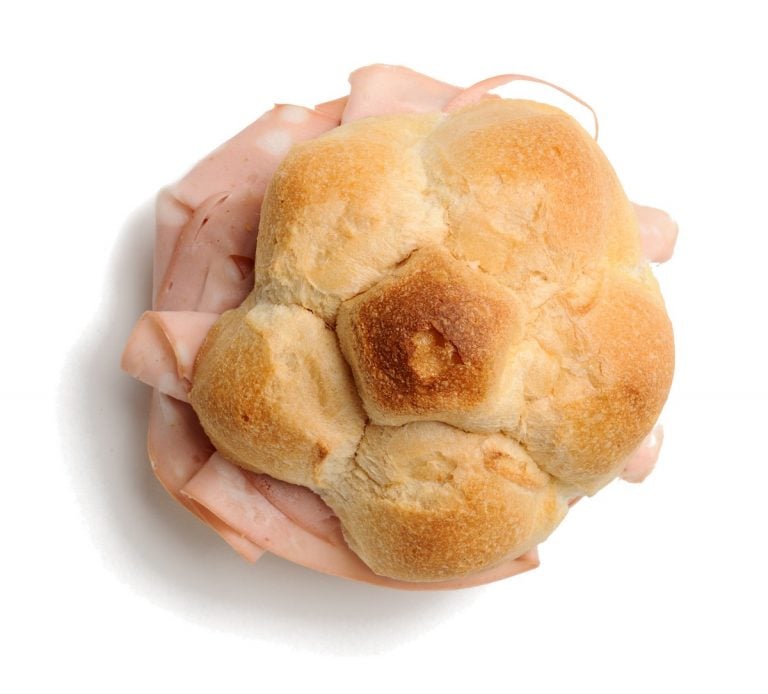
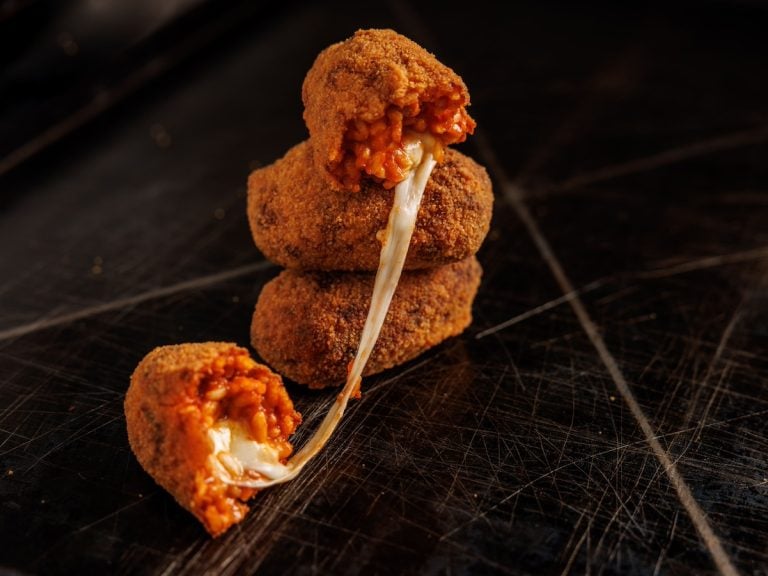 A new era for Casa del Supplì: opens a new location and considers franchising
A new era for Casa del Supplì: opens a new location and considers franchising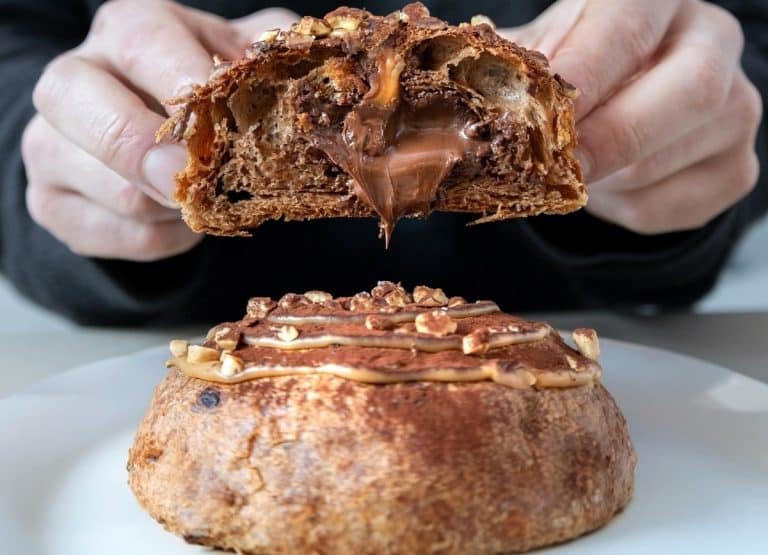 In Milan, a specialty café with gelato is opening near Bocconi University
In Milan, a specialty café with gelato is opening near Bocconi University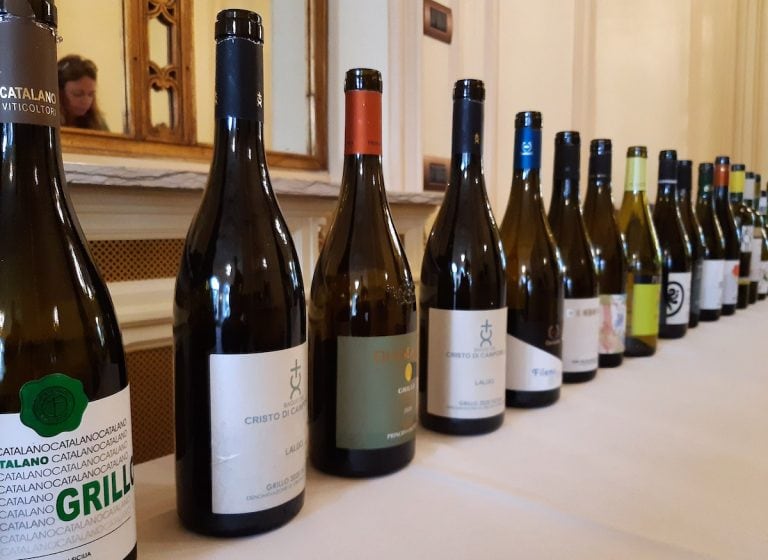 Grillo phenomenon: Sicily is now betting on white wines
Grillo phenomenon: Sicily is now betting on white wines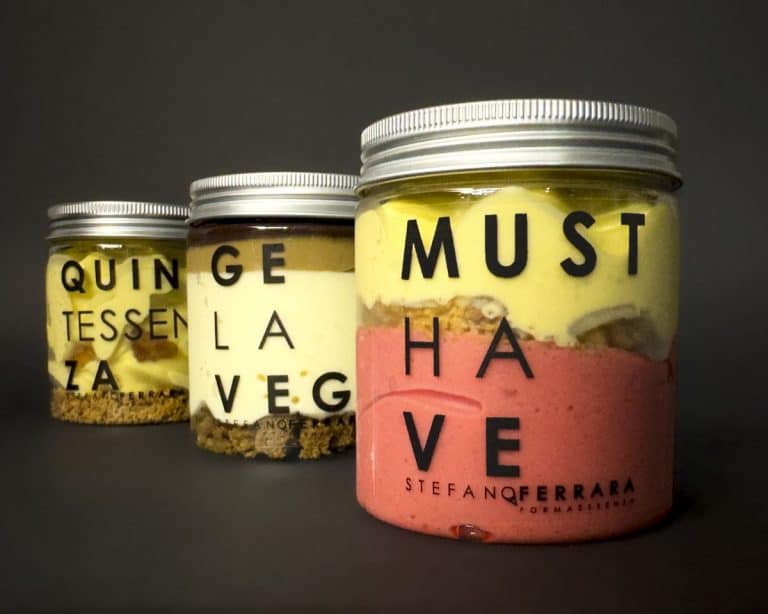 In Rome, a gelateria opens with only jarred ice creams. Master gelato maker Stefano Ferrara bans cones and cups
In Rome, a gelateria opens with only jarred ice creams. Master gelato maker Stefano Ferrara bans cones and cups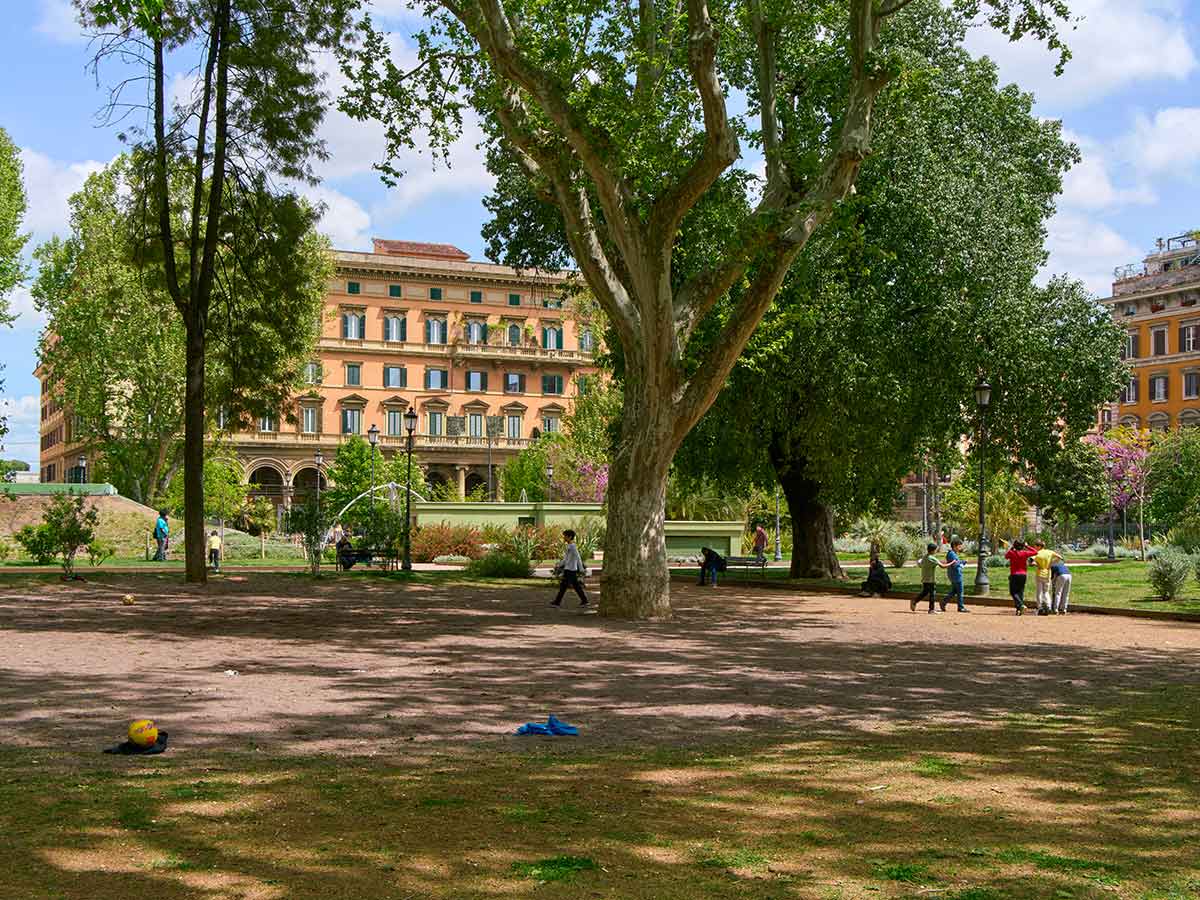 Food shops, historic trattorias, and bakeries: where to eat in Esquilino, the Roman neighborhood that hasn't forgotten the Twentieth Century
Food shops, historic trattorias, and bakeries: where to eat in Esquilino, the Roman neighborhood that hasn't forgotten the Twentieth Century
